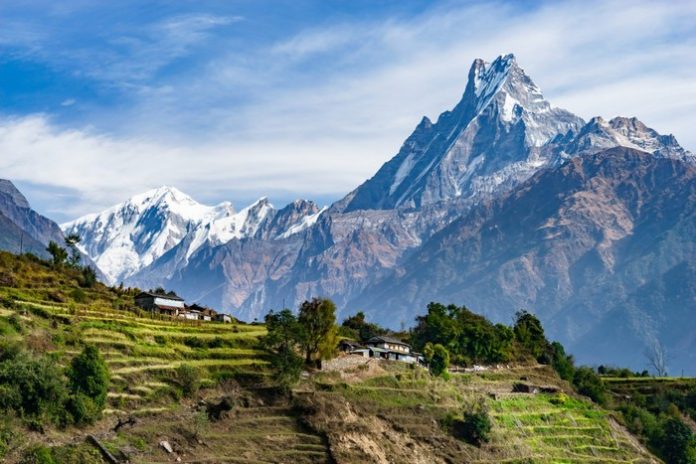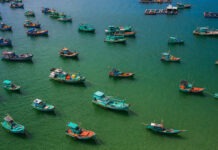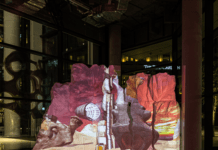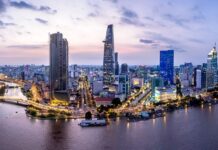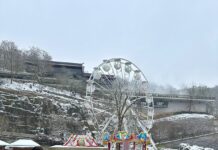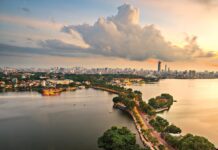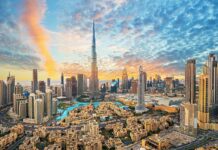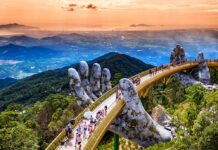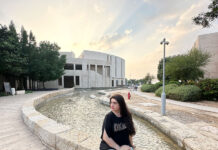Nepal’s capital, Kathmandu, is electrifyingly exotic, with its medieval warren of alleys, Hindu temples and Buddhist stupas, and its uniquely relaxed nightlife. The city is increasingly hectic, however, so many visitors make day-trips into the semi-rural Kathmandu Valley, and the astoundingly well-preserved medieval cities of Patan and Bhaktapur, or overnight at one of the mountain view-points on the valley rim, such as Nagarkot, in the Central Hills. You can gaze at Pokhara’s views, or hang out in its bars, but also go for day-hikes and mountain-bike rides, yoga and meditation courses, and even paragliding and microlight flights.
Other towns in the Western Hills – notably Gorkha with its impressive fortress, Manakamana with its wish-fulfilling temple, and Bandipur with its old-world bazaar – offer history and culture as well as scenery.
Nepal is most renowned, however, for a trekking – hiking from village to village, through massive hills and lush rhododendron forests and up to the peaks and glaciers of the high Himalayas. The thrillingly beautiful and culturally rich Annapurna and Everest regions are the most oriented to trekkers, but other, once-remote areas are opening up, notably Mustang and Manaslu. Rafting down Nepal’s rivers and mountain biking, meanwhile, offer not only adventure but also a different perspective on the countryside and wildlife. Here are the best places to enjoy in Nepal.

Kathmandu: With a fast-growing population of around 1.7m, Nepal’s capital is easily the country’s biggest and most cosmopolitan city: a melting pot of a dozen ethnic groups, and home town of the Newars – master craftsmen and traders extraordinaire. Kathmandu’s Thamel, this old city is still studded with temples and splendid architecture.

Patan: Once the capital of an independent kingdom; though now subsumed into the greater Kathmandu conurbation, it has its own quieter and better-preserved historic district, marked by numerous Buddhist bahal (monastery compounds, some still active), and proud artistry. These quarters represent only part of a complex and eccentric city, which also encompasses shantytowns, decrepit ministry buildings, swanky shopping streets, sequestered suburbs and heaving bazaars.

The Kathmandu Valley: A bowl of gently undulating, richly fertile land, lifted up towards the sky like some kind of sacrifice. It may only be some 25km across, but it is densely packed with sacred sites. So much so, in fact, that well into modern times it was referred to as ‘Nepal mandala’, implying that the entire valley acted as a gigantic spiritual diagram, or circle.
In the heart of the valley, the sheer density of sights is phenomenal. Just beyond the Ring Road beat the twin hearts of Nepali religion: the Shiva temple and sombre cremation ghats at Pashupatinath, the sacred center of Nepali Hinduism; and the vast, white stupa at Boudha, the hub of Tibetan Buddhism’s small renaissance. Other Hindu holy places provide moving reminders of the sacred geography that lies behind the brick and concrete: the sleeping Vishnu statues at Budhanilkantha and Balaju, the sacrificial pit of Dakshinkali and the hilltop temple of Changu Narayan are the most outstanding.
Hiking and cycling are best in the valley fringe. Trails lead beyond the botanical gardens at Godavari to the shrine of Bishanku Narayan, and up through rich forests to Phulchoki, the highest point on the valley rim. For more woodland solitude and views, hike up Shivapuri, Nagarjun Ban’s Jamacho, or any high point on the valley rim.

Janakpur: A holy site of the first order, and its central temple, the ornate Janaki Mandir, is an obligatory stop on the Hindu pilgrimage circuit. Religious fervor seems to lend an aura to everything; the skyline leaves a lasting impression of palm trees and the onion domes and pyramid roofs of local shrines. Most of these distinctive buildings are associated with kuti – self-contained pilgrimage centres and hostels for sadhus – some five hundred of which are scattered throughout the Janakpur area. The city’s other distinguishing feature is its dozens of sacred ponds, which here take the place of river ghats for ritual bathing and dhobi-ing.

Bhaktapur: Of the three former city-states—all Unesco World Heritage Sites–that jostled for power over the Kathmandu Valley, medieval Bhaktapur is the most atmospheric. Its backstreets still burst with temples and pagodas, including the Nyatapola Temple, Nepal’s tallest. Winding lanes lined with red-brick buildings lead onto squares used by locals for drying corn and making pottery – this is no museum but a living, breathing town where residents live their lives in public. For the full experience, stay overnight in a guesthouse or attend one of the city’s fantastic festivals.

Chitwan National Park: In the ‘other Nepal’, down in the humid plains, Chitwan is one of Asia’s best wildlife-viewing spots and the place to don your safari togs and head into the dawn mist in search of rhinos and tigers. There is plenty to keep you busy here, from scanning the forest for critters to visiting local Tharu villages, and the brave can even take a guided walk through the jungle, rich in wildlife. You can see gharial, spotted deer and wild gaurs, plus plenty of exotic birds.

Bodhnath Stupa: The village of Bodhnath is the centre of Nepal’s exiled Tibetan community and home to Asia’s largest stupa, a spectacular white dome and spire that draws Buddhist pilgrims from hundreds of kilometres away. Equally fascinating are the surrounding streets, bustling with monks with shaved heads and maroon robes, and lined with Tibetan monasteries and shops selling prayer wheels and juniper incense. Come at dusk and join the Tibetan pilgrims as they light butter lamps and walk around the stupa on their daily kora (ritual circumambulation).

Pokhara: Nepal’s second-biggest tourist town may lack the historical depth of Kathmandu, but it more than makes up for this with a laid-back vibe and one of the country’s most spectacular locations. The dawn views of Machhapuchhare and Annapurna, mirrored in the calm waters of Phewa Tal, or seen from the town’s hilltop viewpoints, are simply unforgettable. Take them in on a trek, from the saddle of a mountain bike or, best of all, dangling from a paraglider high above the valley floor.

Lumbini: A pilgrimage to the Maya Devi Temple, the birthplace of the Buddha, ranks as one of the subcontinent’s great spiritual journeys. You can visit the exact spot where Siddhartha Gautama was born 2500 years ago, rediscovered only a century or so ago, and then tour a multi-national collection of temples.

